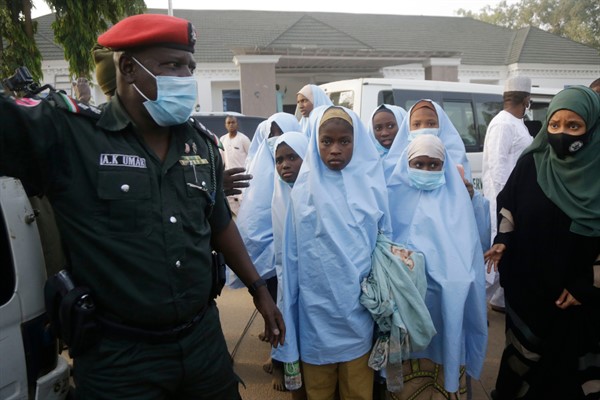Nigeria is once again facing a challenge that has grown all too familiar: children in peril. Kidnappings first gained international prominence in 2014, when the jihadist group Boko Haram abducted 276 schoolgirls from their boarding school in the northeastern town of Chibok. Despite a global media campaign to urge their safe return, #BringBackOurGirls, more than 100 of them are still missing today. Many more children have been abducted since then—and the trend could get even worse.
Over the past four months, armed groups have raided boarding schools and kidnapped more than 650 students. In perhaps the most prominent of these incidents, more than 340 boys were abducted from a school in President Muhammadu Buhari’s home state of Katsina, in December. That was followed by the seizure of 42 students and staff in nearby Niger state in February; one student was killed. Just a few days later, 279 girls were taken in Zamfara state. Thankfully, all of those who were taken in these abductions have since been released, but a fourth group—39 college students kidnapped from a forestry school in Kaduna state in mid-March—are still in captivity.
Unlike the 2014 seizure of the Chibok schoolgirls and the February 2018 abduction of 110 schoolgirls in Dapchi, in Yobe state, the recent spate of kidnappings took place not in Boko Haram’s well-known areas of activity in northeastern Nigeria, but in the increasingly troubled northwest. Here, the impacts of climate change and rapid population growth have degraded the region’s semi-arid soil, forcing more people to vie for control over less usable land. Fueled in part by these higher stakes, the usually low-key disputes between the region’s herders—predominantly members of the Fulani ethnic group—and ethnically diverse farmers are turning increasingly vicious. Both sides have formed armed militias for self-defense and reprisal attacks, spurring a cycle of deadly confrontations.

